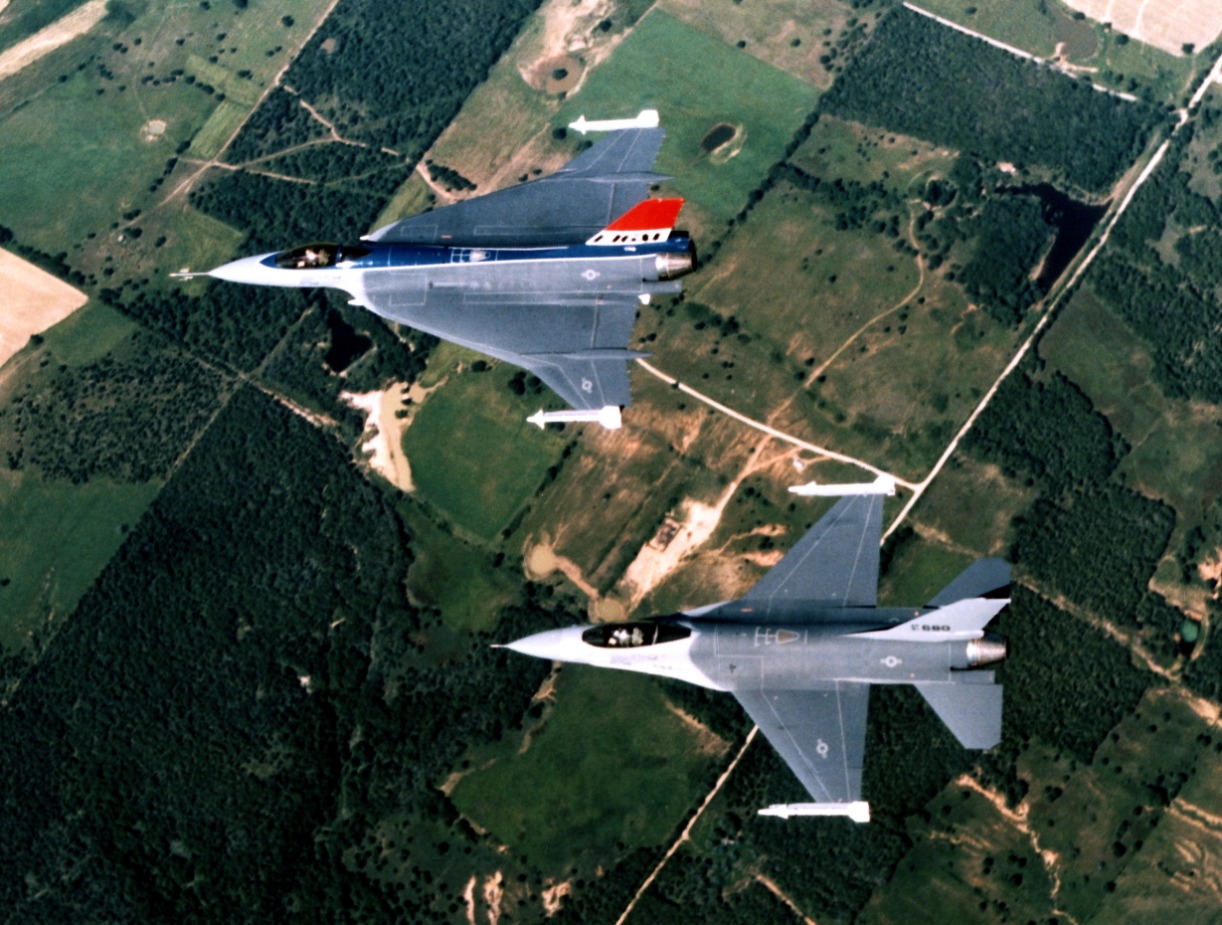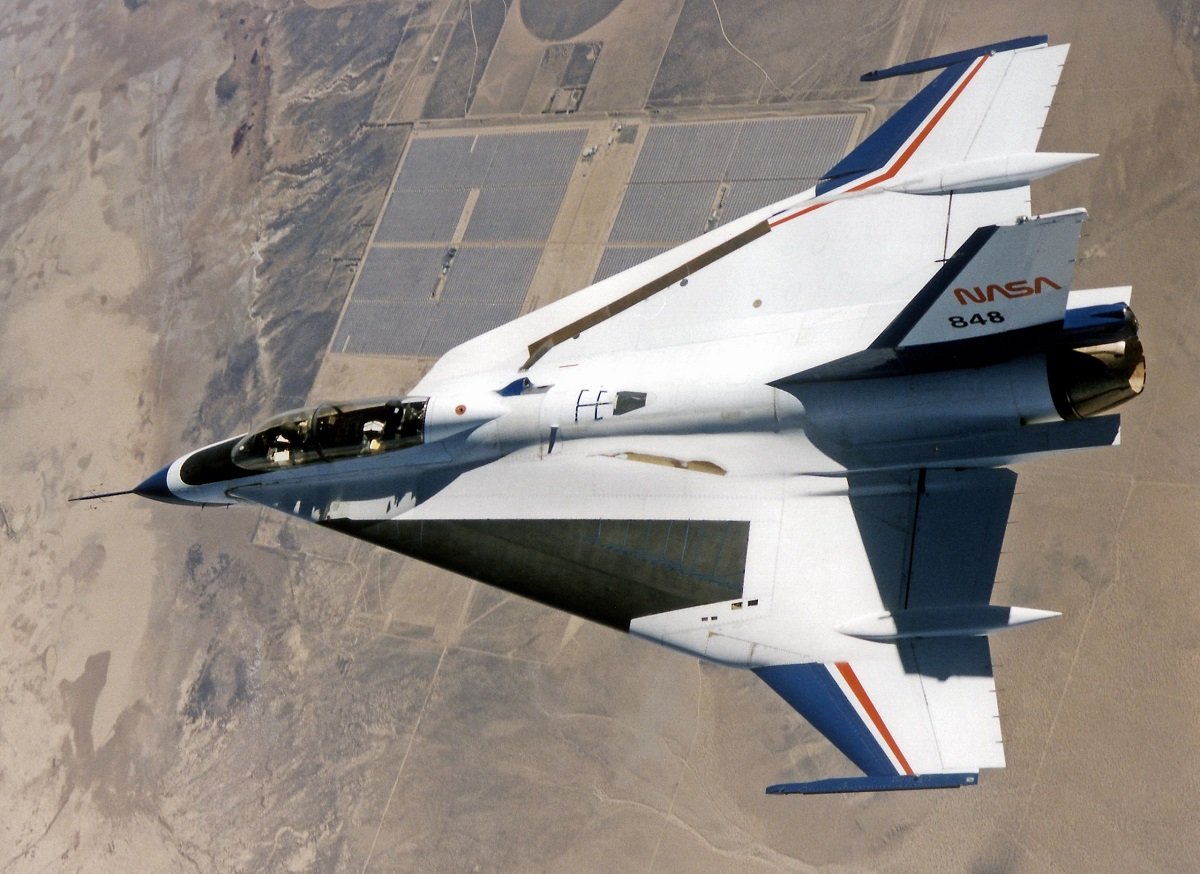Summary and Key Points: The F-16XL, an experimental variant of the F-16 Fighting Falcon, was designed to explore the benefits of a cranked-arrow delta wing, which improved lift, range, and payload capacity.

-Despite its advancements, including a carbon fiber wing skin and the ability to carry 27 hardpoints for armaments, the F-16XL lost to the F-15E Strike Eagle in the Air Force’s Enhanced Tactical Fighter program.
-The two F-16XL prototypes were transferred to NASA for research. The innovations of the F-16XL influenced later F-16 models, proving its development was not in vain.
The F-16XL: A Revolutionary Design That Could Have Changed Air Combat
The F-16XL is an experimental variant of the F-16 Fighting Falcon, a single-engine multirole fighter aircraft originally developed by General Dynamics (now Lockheed Martin) for the United States Air Force. America’s F-16XL was designed to explore the benefits of a cranked-arrow delta wing, which was intended to improve the aircraft’s lift, range, and payload capabilities.
Designers of this unique bird developed it with an additional two fuselage sections near the front and back of the aircraft, thereby extending its length to around 56 inches.
Not only were the cranked-arrow wings a new and innovative turn by the designers of the XL, but they also added a new wing skin of carbon fiber that reduced the bird’s weight by 600 pounds. Here, by the way, you can see the mosaic that is military aerospace engineering. Because obviously the designers were borrowing cutting-edge concepts from other projects, such as stealth planes, with the carbon fiber skin, and toying with them in the context of a souped-up F-16.
Between the new wings and the lighter overall weight, the XL could outfly a conventional F-16 by leaps-and-bounds. Not only that, though, the new design allowed for so much spare room that the F-16XL could carry 27 hardpoints for armaments!
Engineering is so cool, isn’t it?
The XL has Its Origins in an Even Zanier Concept Plane: The SCAMP
In fact, the F-16XL was based on earlier, even more radical F-16 prototype design, the F-16 SCAMP (Supersonic Cruise and Maneuver Prototype) from 1977. The SCAMP was a truly brilliant concept.
On first glance, bean counters might be upset that, as Alex Hollings wrote for Military.com, “The effort wasn’t about fielding another production fighter—General Dynamics had no intention of trying to sell SCAMP once it was complete.” But it was actually a rare example of deft stewardship of the taxpayer’s money by the Pentagon.
Rather than SCAMP being the next warplane for the Air Force in the late 1970s, instead, as Hollings assessed, “the entire premise behind the program was to quickly (and cheaply) field a platform [the USAF] could use to test the concept behind supersonic cruising, or as we’ve come to call it today, ‘supercruising.’”
From there, the F-16 SCAMP became the basis of the F-16XL.
The Air Force’s Enhanced Tactical Fighter Program
The F-16XL was designed to explore the benefits of a cranked-arrow delta wing, which was intended to improve the aircraft’s lift, range, and payload capabilities. This bird was considered to be part of the Air Force’s Enhanced Tactical Fighter (ETF) program.
America’s EFT program was an initiative for the Air Force in the early 1980s. It was aimed at developing a replacement for what was then the aging F-111 Aardvark. The program sought to procure an aircraft that could perform both air-to-air and air-to-ground missions effectively.
Two main contenders emerged: the General Dynamics F-16XL and the McDonnell Douglas F-15E Strike Eagle. As you’ve read the F-16XL was a derivative of the F-16 Fighting Falcon while the F-15E was a derivative of the F-15 Eagle that was merely designed to carry a larger payload and have extended range compared to its predecessors.
Ultimately, by 1984, the Air Force selected the F-15E Strike Eagle over the F-16XL.
Key factors in the Air Force’s decision included the F-15E’s lower development costs, perceived future growth potential, and advantage of having two engines for increased survivability and payload capacity. When the F-16XL lost out to the F-15E Strike Eagle, the two F-16XL prototype aircraft were transferred to NASA for greater aeronautical research.
Replacing the F-111 Aardvark
As for why the Air Force was originally interested in the F-16XL as a replacement for the aging F-111 Aardvark, that comes down strategic and tactical needs. The F-111’s mission sets involved attack, strategic bombing, reconnaissance, and electronic warfare (EW). The F-111 was also known for its innovative variable-sweep wing design, which allowed it to adjust its wing configuration for optimal performance at different speeds and altitudes.
So, the designers of the F-16XL knew that they needed to create a bird that was as versatile as had been the F-111 Aardvark. It would seem as though the designers of the XL focused on the Aardvark’s unique wing design. Hence, why General Dynamics built the F-16XL had its own unique wing configuration—the aforementioned cranked-arrow delta wing.
A Worthwhile Cause
The F-16XL made its inaugural flight on July 14, 1982. After that, the innovative bird went through a wide range of testing and evaluation by the USAF. Although the Air Force ultimately chose to go with the F-15E Strike Eagle as the replacement for the ailing Aardvark, the development of the F-16XL was not an entirely useless exercise.
After all, the Air Force would incorporate the warbird’s innovative design and other features into later versions of the F-16, such as the F-16C/D the F-16 E/F Desert Falcon variants which continue proving their worth today (only now being slowly supplanted by America’s fleet of fifth-generation warplanes).
It’s too bad that the F-16XL was not embraced by the Air Force, as it was undeniably a better plane than the F-15E and would have been more innovative than the F-15E. Ultimately, the Air Force chose to go with the F-15E because of how its production line was established and maintained.

Still, it’s fun to imagine what might have been. A light, supercruising, F-16 with 27 different kinds of armaments on it would have been one lethal warbird.
Author Experience and Expertise: Brandon J. Weichert
Brandon J. Weichert, a National Interest national security analyst, is a former Congressional staffer and geopolitical analyst who is a contributor at The Washington Times, the Asia Times, and The-Pipeline. He is the author of Winning Space: How America Remains a Superpower, Biohacked: China’s Race to Control Life, and The Shadow War: Iran’s Quest for Supremacy. His next book, A Disaster of Our Own Making: How the West Lost Ukraine, is due October 22 from Encounter Books. Weichert can be followed via Twitter @WeTheBrandon.
All images are Creative Commons or Shutterstock.
From the Vault
Russia Freaked Out: Why the U.S. Navy ‘Unretired’ the Iowa-Class Battleships
Battleship vs. Battlecruiser: Iowa-Class vs. Russia’s Kirov-Class (Who Wins?)
